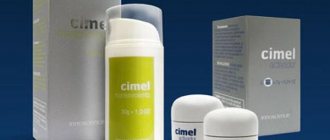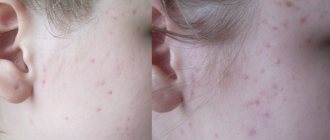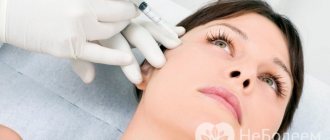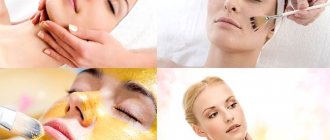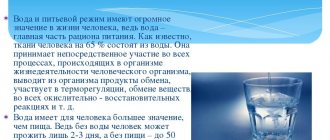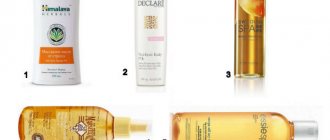06/13/2013 / Peeling
Lactobionic peeling is a new generation of chemical peels. It has a complex effect on the skin and is suitable for patients of different age groups. Due to its minimal irritating effect, it is successfully used even on sensitive, acne-prone skin.
Lactobionic acid or 4-O-β-galactopyranosyl-D-gluconic acid is a polyhydroxy acid. Formed due to the oxidation of milk sugar (lactose disaccharide), it consists of gluconic acid and galactose connected by an ester bond. Lactobionic acid began to be used in cosmetology quite recently. Previously, it was used in medicine only as a stabilizer during transplantation of donor organs and the preparation of antibacterial drugs for intravenous use. Due to its unique ability to synthesize chelate compounds with metals of variable valence, including iron, lactobionic acid has no equal in its stabilizing properties.
Indications for the use of peeling with lactobionic acid
1. skin aging; 2. premature aging; 3. presence of hyperpigmentation; 4. decreased elasticity; 5. skin tendency to inflammatory reactions; 6. wrinkles: both facial and age-related, deep; 7. drooping corners of the mouth, blurry oval of the face; 8. presence of scars and ingrown hairs; 9. photoaging.
Polyhydroxy acids are characterized by gradual penetration into the layers of the skin, so their use in peeling procedures does not cause severe burning and irritation of the skin.
Lactobionic peeling can be safely combined with other cosmetic procedures - laser facial resurfacing and microdermabrasion, which helps achieve a more noticeable cosmetic effect. This sets it apart from other peelings.
Contraindications for peeling with lactobionic acid:
- skin diseases in the acute phase of inflammation; - pregnancy at any stage, breastfeeding; - increased body temperature; - epilepsy, mental disorders; - childhood; — allergic reactions to peeling components; - herpes in the active phase; - the presence of pustules on the skin with the active release of purulent-necrotic contents.
Chemical peels should be carried out in a beauty salon and only by experienced, specially trained specialists. If some rules are not followed, severe skin burns, difficult to control allergic reactions, scarring and pigmentation may occur.
The presence of AIDS or HIV infection is a relative contraindication to this procedure, and the question of the advisability of prescribing peeling is decided on a strictly individual basis. Due to pathologically reduced immunity and a poor degree of skin regeneration, in some cases it is necessary to abandon such cosmetic manipulations.
If there is a herpes virus in the body, albeit in an inactive state, it is recommended to carry out preventive treatment before performing lactobione peeling. People whose therapy requires the use of isotretinoin cannot undergo chemical peels for six months after stopping the drug, since such medications reduce lymph circulation and disrupt blood flow, which can slow down the process of cell regeneration in the post-peel period.
In patients with psoriasis, chemical peels can lead to exacerbations and even greater spread of psoriatic rashes on the surface of the skin.
Properties of lactobionic acid
Lactobionic acid is a polyhydroxy acid, a component related to the skin.
Beneficial features:
- Has a regenerating effect . Galactose is one of the components of lactobionic acid, has a restorative and regenerating effect. Due to this property, lactobionic acid is actively used to eliminate acne and restore skin after treating inflammation.
- Step by step penetration . Due to its significant molecular weight and relatively large molecular size, lactobionic acid gradually penetrates between the layers of the skin, thereby minimizing the risks of developing post-peeling complications.
- Biological compatibility with human . The acid is very well accepted by the skin (there is no itching, peeling or redness), provided that the order of application steps is followed.
- Skin moisturizing . Treating the skin with lactobionic acid saturates it with moisture. This effect can be achieved due to the fact that the acid actively absorbs moisture and retains it in the layers of the skin.
- Has a rejuvenating effect . Age-related changes in the skin can be eliminated as quickly as possible thanks to the production of collagen and stopping the photoaging process.
- Good exfoliation. Treatment with lactobionic acid activates the process of skin cell regeneration, gentle cleansing of dead particles and impurities.
- Can be used regardless of climatic conditions. Lactobionic peeling is allowed to be carried out regardless of the ambient temperature and humidity, without the risk of unexpected skin reactions.
Unique properties of lactobionic acid
1. Regeneration.
Lactobionic acid contains galactose, which is famous for its wound-healing properties. Acid helps restore damaged skin structures and speed up regeneration. It is precisely because of its unique ability to stimulate wound healing that it is successfully used on skin prone to acne and inflammatory reactions.
2. Gradual penetration.
Lactobionic acid has a significant molecular weight and a relatively large molecular size, due to which it penetrates into the skin layer by layer, gradually and less traumaticly than other acids - glycolic, lactic. That is why this type of acid does not provoke a strong burning sensation during peeling and is not inclined to provoke the development of post-peeling complications.
3. High biocompatibility with human skin.
Lactobionic acid is well accepted by the skin and, if all stages of chemical peeling are followed, does not provoke excessive peeling, itching and facial hyperemia.
4. Fight against photoaging.
Lactobionic acid inhibits matrix metalloproteinases, which act as the main cause of skin aging. They destroy the main components of the intercellular matrix of the skin, in particular collagen, which leads to loss of elasticity, the appearance of deep wrinkles and sagging of the oval of the face. Metalloproteinases trigger the aging process of the skin and provoke the formation of red oblong formations on the face - telangiectasia. They are sharply activated during prolonged exposure to the sun, leading to rapidly developing photoaging.
5. Antioxidant properties.
Lactobionic acid can act as a link between iron ions, providing a pronounced antioxidant effect. It neutralizes free radicals and protects the skin from the harmful effects of ultraviolet radiation.
6. Deep hydration.
Lactobionic acid helps saturate the skin with life-giving moisture. This occurs due to the ability of the acid to actively adsorb moisture and at the same time retain the resulting liquid from the outside in the skin, even during prolonged exposure to unfavorable climatic conditions - with increased dry air. After use on the surface of the skin, lactobionic acid creates an aqueous film, which for a long time prevents the skin from drying out and developing an unpleasant feeling of itching and tightness.
7. Exfoliating effect.
Lactobionic acid actively promotes the renewal of cellular structures, helping to gently but deeply cleanse the skin of dead cells, particles of dust and dirt clogged in the pores.
8. Possibility of use at any time of the year.
Along with mandelic acid, lactobionic acid acts as a photoprotector, allowing peeling procedures to be carried out at any time of the year, including in the summer, without any fear of unexpected skin reactions, such as the formation of freckles and age spots.
9. Rejuvenation, increased skin tone.
Thanks to collagen synthesis and slowing down photoaging, the acid prolongs youth.
10. Active recovery after traumatic cosmetic procedures
— laser resurfacing, plastic surgery, microdermabrasion.
Gluconolactone and lactobionic acid. Summer peelings
Hello) What to do with acids in summer?
Is it worth doing peelings? The question is relevant, especially for those who cannot live without acids. What to do when the sun is very active? Actually, I personally don’t see this as a big problem, some people do deep peelings, the main thing is to use adequate Sanskrin. However, there are different moments in life, most acids, as is well known, increase skin sensitization by an order of magnitude, but you don’t want to take risks. Let’s say I know first-hand what pigment is and how hard it is to get rid of it. But there is a way out - in addition to mandelic acid, which, for example, personally is not very suitable for me, and ferulic acid, there are also polyhydroxy acids (PHAs). Please take a look. Polyhydroxy acids have a larger molecular weight and structure and penetrate the skin gently and gradually. They provide additional hydration, deeper than AHA acids, significantly increasing the protective function of the stratum corneum of the epidermis, and therefore increase the skin's resistance to chemical reactions. Polyhydroxy acids have been shown to reduce the effects of photoaging: wrinkles, hyperpigmentation, dryness and flaking. Research has shown, among other things, an increase in the connection of glycosaminoglycans (GAGs), involved in the formation of collagen and elastin fibers. Polyhydroxy acids are generally compatible with sensitive skin and can be used after cosmetic procedures such as chemical peels and lasers to provide additional anti-aging, antioxidant and moisturizing benefits. The two most commonly used acids are gluconolactone and lactobionic acid. Gluconolactone
(INCI - Gluconolactone) belongs to a new generation of hydroxy acids, which have a biological effect in many ways similar to AHA acids, but have a number of advantageous differences.
In its chemical structure, gluconolactone is an alpha hydroxy acid with five hydroxyl groups in the molecule, while AHAs have one active hydroxy group. The more hydroxyl groups in a molecule of a substance, the more pronounced moisturizing properties it has. It does not exhibit irritating properties, having a bulk molecule of 178 daltons, as it slowly penetrates the skin without causing a burning sensation. (For reference, glycolic acid has a molecule of 78 daltons.) Another advantage is that gluconolactone is a natural antioxidant, comparable in activity to ascorbic acid and tocopherol. Main experimentally proven properties: 1. Protects elastin and collagen fibers. 2. Provides a high level of antioxidant protection. 3. Moisturizes the skin, evens out its color and texture. 4. Has a photoprotective effect. 5. Has an anti-inflammatory effect. 6. Regulates the process of natural keratinization of the skin. Gluconolactone is used in medicinal products for inflammatory skin diseases accompanied by hyperkeratosis: psoriasis, acne, dermatitis, and in anti-aging cosmetics as a means of preventing and correcting age-related changes in the skin, especially sensitive skin. In combination with various procedures, such as laser resurfacing or microdermabrasion, and in peelings, of course. Peels with gluconolactone are considered to be inferior in strength to glycolic and retinoic peels, but due to the lack of irritation, they do not require neutralization and can be carried out quite often until a noticeable effect is achieved. When used as part of peeling solutions or cosmetics, gluconolactone increases skin hydration, smoothes fine wrinkles and folds, promotes skin elasticity, evens out its tone due to keratolytic action, eliminates roughness and tightens pores. Gluconolactone works well with tretinoin and hydroquinone and is safe and not toxic, mutagenic or teratogenic. When used externally, it does not cause irritation or sensitization of the skin and mucous membranes. Input rate: 0.5-15% Used as a preservative, trade name Geogard Ultra (INCI: Gluconolactone (and) Sodium Benzoate) Where you can find gluconolactone: 1. Filorga Sleep and Peel Resufracing Night Cream
.
In the brand, it is generally very common in many products. 2. MyChelle Dermaceuticals Fruit Enzyme Cleanser
- cleanser with fruit enzymes.
On Iherb it is also often found in various cosmetics, but you need to keep in mind that if gluconolactone is combined with sodium benzoate and is at the end of the list, then it acts as a preservative. 3. Exuviance Professional Intense Lightening Complex
(American professional brand, alcohol first, contains 2% hydroquinone, 5% lactobionic acid, 5% gluconolactone, 3% kojic acid. (composition: Alcohol Denat., Aqua (Water), Arginine, BHT, CI 17200 (Red 33), CI 19140 (Yellow 5), Citric Acid, Gluconolactone, Glycyrrhiza Glabra (Licorice) Extract, Kojic Acid, Lactobionic Acid, Oxalic Acid, Polyquaternium-10, Potassium Hydroxide, Propylene Glycol, Sodium Bisulfite, Sodium Sulfite.)
4. Neostrata Restore Bio Hydrating Cream
(15% gluconolactone) (composition: Water, Gluconolactone, C12-15 Alkyl Benzoate, Propylene Glycol, Isododecane, PEG-40 Stearate, Sorbitan Monostearate, Isocetyl Alcohol, Stearyl Alcohol, Stearic Acid , Glyceryl Diisostearate, Cyclomethicone (Cyclopentasiloxane), TEA, Ethoxydiglycol, Dimethicone (Methylpolysiloxane), Butylene Glycol, Tocopheryl (Vitamin E) Acetate, Arginine, Disodium EDTA, Magnesium Aluminum Silicate, Xanthan Gum, Methylparaben, Chlorphenesin, Propylparaben)
5. Nu Skin Face Revealing
(contains lactobionic acid and gluconolactone) 6. In Asia there is also
a CNP Laboratory Invisible Peeling booster
(gluconolactone in second place) 7. And I would like to mention the Polish
Belweder
. They have an eye cream with gluconolactone, although the quantity is unknown, although the manufacturer indicates the second place. And of course, you can buy it raw and make, for example, a tonic.
In any case, if you find gluconolactone in the composition, take it, it perfectly moisturizes, making the skin soft, especially aging skin.
Lactobionic acid
(it is called “summer” acid) - (INCI - Lactobionic acid) or 4-O-β-galactopyranosyl-D-gluconic acid also belongs to polyhydroxy acids.
Formed due to the oxidation of milk sugar (lactose disaccharide), it consists of gluconic acid and galactose connected by an ester bond. Lactobionic acid began to be used in cosmetology quite recently. Previously, it was used in medicine only as a stabilizer during transplantation of donor organs and the preparation of antibacterial drugs for intravenous use. Due to its unique ability to synthesize chelate compounds with metals of variable valence, including iron, lactobionic acid has no equal in its stabilizing properties. Main properties: 1. Regeneration due to galactose included in the composition. 2. Layer-by-layer penetration into the skin, therefore not traumatic. 3. High biocompatibility with skin. 4. Fight against photoaging. 5. Antioxidant. 6. Deep hydration. 7. Exfoliation. Recommended input - 3-15% In peelings, lactobionic acid is usually combined with lactic and glycolic acid. They vary in strength. Very often in cosmetics for home use it can be found in combination with gluconolactone... There are a lot of ready-made cosmetics with it from the same American Neostrata (in fact, I heard that they patented it, but I could be wrong) 1. Neostrata Citriate Home Peeling System
— in addition to 10% glycolic and citric acids, it contains 5% lactobionic acid.
Two-step peeling. 2. Neostrata Pack Bionica Crema
- 2% lactobionic acid, 4% gluconolactone
3. Bielenda Skin Clinic Anti-Age Serum
, containing mandelic, lactobionic acids and niacinamide.
4. Alpika Peeling Lactobionic White 5%
, containing lactobionic, lactic, malic, salicylic acids.
5. Arkana
, a new Polish brand of professional cosmetics (I see, Poland is just rushing)
6. Clarena Mandelic Php Acid Serum
, another Polish brand, containing mandelic acid, lactobionic acid and gluconolactone. Reviews about the home line are so-so. I also advise you to take a closer look at the Polish brands Bandi and Iwostin.
Sources: Skin care with polyhydroxy acids Use of polyhydroxy acids for skin photoaging picture from the public domain
That's probably all) Thank you for watching. I am Lena.
Girls, if you know any other products with gluconolactone and lactobionic acid, please share them in the comments.
UPD: Thanks to the girls who responded in the comments. Peel Me. Radiance Peeling line
. Contains lactobionic acid, niacinamide, botanical oils, hyaluronic acid, birch sap. But there is also alcohol.
SVR Sebiacler
- 14% gluconolactone, 4% niacinamide, salicylic acid.
Workshop of Olesya Mustaeva.
Night cream with polyacids, 50 ml. Gluconolactone, without indicating the percentage input.
Biologique Recherche Lotion P50W
Phenol-free version.
Contains gluconolactone, niacinamide, lactic acid, fruit acids, sulfur, salicylic acid derivative. Swanicoco PHA 10% Coco Peeling Cream
. Contains gluconolactone, niacinamide, lactobionic acid, centella asiatica extract.
Skinfood Freshmade Pineapple Mask (Peeling Cream)
. Contains lactobionic acid, AHA acids, salicylic acid. There is alcohol.
COSRX PHA Moisture Renewal Power Cream
. Gluconolactone 3%, niacinamide 2%.
Scinic Night Intense Peeling Serum
Contains lactic acid, glycolic acid, centella extract, hemp oil, saccharomyces, gluconolactone.
There is alcohol. Naruko [Brightening] Raw Job's Tears Series. 5% gluconolactone.
Increase
The main benefits of peeling with lactobionic acid
1. Gentle removal of dead cells, without irritating the skin. Lactobionic peeling reduces signs of inflammation on the face and reduces the severity of acne.
2. Leveling the skin texture. Thanks to its ability to cleanse the skin, restore metabolic processes, influence fibroblasts, and enhance collagen synthesis, this type of peeling significantly rejuvenates, tightens the skin and eliminates wrinkles, including deep ones.
3. Reduced pigmentation. Lactobionic peeling removes the dead layer of cells, exfoliates and brightens the skin, reducing the intensity of age spots.
4. Increasing skin hydration levels. The ability of acid to retain moisture has made lactobione peeling popular in countries with dry, hot climates, as well as in situations with excessively dry skin.
5. Short rehabilitation period. The low damaging properties of peeling with lactobionic acid allow you to return to your previous lifestyle and appear in society almost immediately after the procedure.
6. Reduced acne. The reduction of acne and blackheads is facilitated by deep cleansing of the skin, smoothing and anti-inflammatory properties of this chemical peeling.
Peeling with lactobionic acid destroys skin cells at different depths, which helps to increase the rate of collagen synthesis and cell renewal. Naturally, this process traumatizes the skin to a certain extent, but at the same time it also contributes to a powerful push so that young cells begin to appear, and the skin becomes more youthful and elastic. With the help of the chemical components of the acid, the epidermal barrier is restored, and the epidermis regains its ability to retain life-giving moisture.
The use of lactobionic acid as a peel requires certain preparation, with which, as a rule, no pronounced post-peeling reactions occur.
How the procedure is carried out, main stages
The quality of lactobione peeling depends on strict adherence to the sequence of all stages of the procedure:
- Cleansing the skin. Rejuvenation manipulations are carried out using milk, which contains hyaluronic acid. It is quite gentle on the skin. It can be applied behind the eyelid area. The face is also additionally treated with tonic and cosmetic gel, which includes glycolic acid. Such manipulations allow you to remove particles of sebum and impurities from the top layer of skin. The result of such products is perfectly smooth facial skin.
Important: the use of cosmetic gel in the eyelid area is prohibited. The use of soap-containing products and alkalis is also undesirable. They change the pH level of the skin and reduce the positive effect of peeling.
- Application of the base composition. Lactobionic acid is applied along massage lines using a special brush. To avoid contact of the substance with the eyes, cover this area with soft napkins. The acid is applied with gentle movements in the following sequence: forehead, temples, cheeks, chin.
- Neutralization process. The peeling composition is kept on the skin for a certain time. The duration of the procedure is determined individually for each client.
On average, ten minutes after applying the peeling composition, the neutralization procedure is carried out.
Important: lactobione peeling stops immediately if the client feels a strong burning sensation or pronounced areas of redness appear.
At the end of the neutralization procedure, the remaining peeling is washed off with warm water.
- Moisturizing the skin involves the use of moisturizing compounds or anti-inflammatory agents.
- The final stage is consultation with the patient regarding further skin care.
Important: Alpica lactobione peeling can only be performed in a medical facility by an experienced cosmetologist. Manipulating lactobionic acid at home without possessing certain skills and knowledge is fraught with skin burns and other equally dangerous complications.
Stages of peeling with lactobionic acid.
Pre-peeling preparation
Two weeks before peeling, it is recommended to use retinoids, fruit acids with a low percentage of acidity, whitening agents (arbutin, ascorbic and kojic acid, extracts of yarrow, lemon, parsley, cucumber), antioxidants (selenium, vitamins, succinic acid), moisturizers ( hyaluronic acid and glycerin), sunscreens.
Pre-peeling preparation is carried out with the aim of smoothing the stratum corneum of the skin, accelerating regeneration processes and creating favorable conditions for deeper penetration of the chemical components of the acid. Completing all preparatory actions helps reduce the risk of developing pigmentation after chemical peeling, inflammation and peeling.
Aromatic retinoids should be used only in the recommended dosage and should be discontinued a week before the lactobione peel. The fact is that they are capable of increasing the depth of penetration of acid, thereby causing skin burns. Traumatic cosmetic procedures (hair removal, laser facial resurfacing) should be carried out no later than a week before the intended peeling.
If the first use of acid is carried out with a preparation of low concentration, then preliminary preparation may not be required. Skin with severe pigmentation requires long-term pre-peeling treatment. In this case, fruit acids should be started to be used several weeks before the scheduled peeling, combining them with whitening cosmetics - citric acid, arbutin, bearberry extract.
Why is pre-peeling preparation necessary?
1. By using low-concentrated acids and bleaching agents, the skin adapts and prepares it for the more aggressive effects of peeling. 2. Pre-peeling preparation allows you to identify allergic reactions even before peeling, which makes it possible to prevent the development of more serious complications. 3. There is a significant leveling of the skin, its thinning, which allows the peeling to penetrate the skin faster and more evenly, subject to strict control by the cosmetologist. 4. Pre-peeling preparation reduces the production of melanin, preventing the development of increased pigmentation after a peeling session with concentrated lactobionic acid.
Carrying out the peeling itself with lactobionic acid
How is the lactobione peeling procedure performed?
Skin cleansing
Cleansing procedures are carried out using a special milk containing hyaluronic acid, which is quite gentle on the skin and can even be used on the eyelid area. After this, the patient’s face is cleansed with a toner, also containing a weak percentage of acid, and a cosmetic gel containing glycolic acid is applied to it. This gel effectively removes excess fat, dirt and dust from the skin surface. It helps smooth the skin and more evenly distribute lactobionic acid inside. The use of this gel on the area under the eyelids is strictly prohibited. Some beauty salons use soap-containing components and alkalis to cleanse the skin, which is also undesirable, as they disrupt the pH of the skin and reduce the overall positive effect of peeling.
Application of lactobionic acid
The acid is applied with a brush in a certain sequence: first on the forehead and temples, then on the cheeks, neck and chin, and then in the center of the face, finishing with the fixed part. It is recommended to place napkins over the eyes so that the acid does not accidentally get into them and the patient does not open them every now and then while applying the acid. The most commonly used is 5% lactobionic acid, but other concentrations ranging from 2% to 10% are also available.
Neutralization process
The exposure time is determined by the individual reaction of the body, the degree of hyperemia, initial pigmentation, the concentration of the original acid composition and other factors. If there is a strong burning sensation or massive redness, the procedure must be stopped immediately. As a rule, neutralization is carried out no later than 10-15 minutes from the start of covering the skin with acid.
Removing lactobionic acid residues from the skin surface
After using the neutralizer, wash off the skin with plenty of water. The face is treated with intensive moisturizing compounds, anti-inflammatory agents, and the patient receives detailed instructions on post-peeling care at home.
Lactobionic peeling is carried out in a course of about 6 procedures with an interval of 15 days.
Post-peeling care
For several months after peeling, it is mandatory to use products that block melanogenesis and protect against ultraviolet radiation. It is very important to provide the skin with the necessary moisture, since intensive hydration of the epidermis several times reduces the risk of scarring and promotes normal tissue epithelization.
For 12 hours after peeling, do not expose the skin to direct sunlight or contact with water. After this period, you can wash your face only with boiled, warm liquid or infusion of anti-inflammatory herbs. Under no circumstances should you artificially speed up the healing process or peel off any crusts that form.
Modern means used in the post-peeling period are aimed at preventing the inflammatory process and the development of complications. To protect the skin from moisture loss and the penetration of bacterial microflora, preparations are used that cover the skin with a colorless protective film, containing hyaluronic acid and aloe vera extract. Be sure to use drugs with antioxidant effects based on green tea, grape seeds, as well as anti-inflammatory drugs with extracts of witch hazel, calendula, and arnica. It is recommended to take vitamin complexes, active antioxidants, and vasoprotectors internally.
Stages of exfoliation
Preparing the skin for cleansing
The patient needs to prepare for performing lactobionic cleansing. To do this, 2 weeks before the scheduled procedure, the client uses moisturizing, whitening cosmetics, and products with the addition of fruit acids.
Masks with cucumber, lemon extract, parsley, cosmetic products with hyaluronic acid, and glycerin are excellent for whitening and moisturizing the skin. It is important to adjust your diet. Add more foods with increased antioxidant properties.
It is also recommended to regularly apply sunscreen before peeling.
During the preparatory period, retinoids are prescribed. You need to take them for 7 days. A week before peeling, you should stop taking medications so as not to cause a burn during peeling.
A shortened preparatory period is allowed, in which case peeling is performed with a low concentration of lactobionic acid.
If the patient has strong skin pigmentation, then the cosmetologist prescribes a set of whitening procedures. It consists of regular use of special cosmetics. Only after the problem has been partially eliminated can exfoliation with lactobionic acid be performed.
All these measures are aimed at smoothing and softening the skin, identifying allergies and the characteristics of the client’s epidermis. Prepared skin promotes deeper penetration of acid into the inner layers of the epidermis, which increases the effectiveness of peeling.
Procedure protocol
The peeling procedure can be divided into 4 stages:
- Preliminary cleansing of the integument. To remove sebaceous secretions and large impurities from the surface of the face, use a special milk. It contains hyaluronic acid. Then the skin is wiped with a tonic with the addition of lactobionic acid. To completely degrease the skin, glycolic gel is applied to the face, leaving only the area around the eyes untouched.
- Peeling. Lactobionic acid in the required concentration (2–10%) is distributed evenly on the face. To apply the product, the cosmetologist uses a brush. It is important to follow the order of actions: the forehead and temples are treated first, then the composition is applied to the cheeks and chin. The central part of the face is processed last.
- Neutralization of acid. After 10–15 minutes (the exposure time is determined by the cosmetologist, taking into account the individual characteristics of the patient’s epidermis, its sensitivity and the concentration of the exfoliant), a neutralizer is applied to the skin. Timely removal of the acidic agent prevents complications after peeling.
- Removing any remaining peeling agent. After neutralization, the remaining product is washed off from the skin. For this purpose, clean water is used. To soothe inflamed skin, the cosmetologist uses special cosmetics.
Exfoliation of skin with lactobionic acid is carried out only under the guidance of a cosmetologist. The level of professionalism of the doctor and experience in carrying out such procedures is reflected in the outcome of the procedure. Keep this in mind when choosing a cosmetology clinic or beauty salon.
Peeling with lactobionic acid is performed in courses. One course involves 4–6 procedures every 15 days. The cosmetologist has the right to adjust the peeling schedule depending on the speed of restoration of the skin after exfoliation.
Possible complications
1. Development of the herpetic process. If you find signs of such an infectious disease, then you should consult a doctor to prescribe antiviral ointments and medications.
2. Tissue swelling, redness.
3. Skin peeling. During the week, the skin may peel slightly after a chemical peel. This is a completely normal reaction.
4. Attachment of infection. It develops when the rules of the procedure are not followed or in the absence of adequate facial care in the post-peeling period.
5. Exacerbation of chronic skin diseases.
6. Hyperkeratosis.
7. Hyperpigmentation.
8. Allergic reactions.
After peeling with lactobionic acid, the patient needs regular preventive examinations. If pronounced and unexpected reactions occur - swelling, hyperemia, itching, bleeding, purulent discharge, inflammation, you should immediately contact a dermatologist for examination and treatment.
Prices and brands of peelings
Lactobionic peeling is an uncommon procedure in beauty salons and aesthetic medical centers, since the use of lactobionic acid for cosmetic purposes began recently.
Among the companies that offer lactobione peeling are the following: Renew (Israel), Natinuel (Italy), Syrio Pharma (Italy), Tegor (Spain), NeoStrata (USA). The cost of one procedure in a beauty salon ranges from 1,600 to 5,500 rubles. On average, the course will cost 18,000 - 20,000 rubles.
Tags: other
Market Analytics
- Black Lives Matter movement: reaction and consequences for the beauty industry
- COVID-19 is changing the rules of the game in the cosmetics market
- Beauty of the future: cosmetic innovations 2020
Convenient search for beauty salons on our website
Beauty salons in Moscow Beauty salons in St. Petersburg Beauty salons in Ekaterinburg Beauty salons in Novosibirsk
Latest blog posts on our website
- Naturecream / Apricot kernel oil for face
- Naturecream / MATRIXYL3000 - the best skin elasticity stimulator
- Naturecream / SPF in Natural Oils
- Naturecream / Geranium (Pelargonium) oil for skin health and beauty
- Prostye-sovety / Save on a beauty salon: procedures that can be done at home
- Naturecream / Growth Factor - brings back youth?
- Oksana-Lezina / 3 effective abdominal exercises from a fitness instructor for beginners
- Prostye-sovety / Making perfect curls at home
- Prostye-sovety / Which hair removal method to choose
- Naturecream / Wrinkles Puppets
Latest forum topics on our website
- Natalya / How to properly make a gelatin mask?
- Mrs._Smith / Badly sunburned! What to do?((
- Ice / Is it necessary to combine fitness classes with a diet?
- Antonova / What can be used for hair loss?
- Radio operatorKat / Who was on a protein diet?
Reviews of the procedure
Peeling with lactobionic acid for the face [Leave a review]
Leave your feedback about this procedure (it will appear on this page after moderation)
In this form, describe only
your personal
experience of undergoing the procedure.
In order to leave a comment regarding the content of the article, use another form - in the “comments” block at the bottom of the page.
Other articles in this section
| Coral peeling Rose de Mer for the face Coral peeling is a type of mechanical exfoliation and cleansing of the skin. This method is used in cosmetology clinics and salons as an alternative to harsh chemical peels. Rose de Mer peeling occurs without skin burns, eliminates protein coagulation, but causes painful sensations of varying strength, which manifest themselves individually. With coral peeling, the upper keratinized layers of the epidermis are removed, which allows solving cosmetic problems associated with acne, pigmentation, premature aging, etc. |
| Facial peeling Facial peeling - what is it, types, results after the procedure, before and after photos, what procedures can be combined with. About all this in this article. Peeling refers to deep facial cleansing products. The purpose of these products is to exfoliate dead horn cells, make the surface of the skin smooth, cleanse the skin of any impurities and stimulate the renewal of the epidermis. |
| Antioxidant peeling Sun Peel (Sun peeling) for the face Many representatives of the fair sex have overly sensitive skin, so in the summer, pigment spots appear on the face. In order to refresh the skin, give it radiance and get rid of hyperpigmentation, doctors recommend using safe antioxidant peeling Sun Peel. |
| Laser skin resurfacing Facial skin resurfacing (dermabrasion) is a deep peeling procedure during which the epidermis and part of the dermis are completely removed. One of the progressive methods of skin resurfacing is to carry out this procedure using a laser. In this case, its radiation leads to complete evaporation and coagulation of soft tissue to the required depth. |
| Wine peeling for the face Wine peeling is a cosmetic procedure for treating the skin with a composition with a high concentration of acids, an acetic complex and components of plant origin, which determines its high efficiency. It belongs to the group of superficial and soft medium peels. The excellent results of this procedure are expressed in the stimulation of exfoliation and renewal of the epidermis, as well as the activation of the processes of getting rid of damaged collagen and elastin fibers and the formation of new fibers. |
| Croton peeling for the face Croton peeling is a type of chemical peeling that differs from others in the content of crotonic acid in its composition, which is extracted from the seed oil of the Croton tree, which grows on the island of Sri Lanka and in China. Research has proven that the resulting oil noticeably removes not only the appearance of wrinkles, but also evens out the skin texture itself. The population of these territories has long been using this oil for rejuvenation. |
| Pyruvic peel (Green Peel) for the face Pyruvic peeling, also known as green peeling (Green Peel), is an exfoliation of the skin using a drug whose main active ingredient is pyruvic (pyruvic) keto acid. Using a product containing pyruvic acid, you can achieve superficial or superficial-medium exfoliation. In terms of depth of action, pyruvic peel is superior to glycolic peel, but comparable to trichloroacetic peel (TCA). |
| Arginine peeling for the face One of the types of chemical peelings is arginine peeling, which rejuvenates and moisturizes the skin, has a mild exfoliating effect, and prevents the appearance of the inflammatory process. The result is already visible after the first procedure. The skin becomes velvety, matte, elastic, and a healthy complexion appears. |
| Homemade facial peeling Homemade facial peeling, of course, will not replace procedures with a cosmetologist, but it will help keep your skin in good condition. Let's see how you can do facial peeling at home using professional preparations and products that you can prepare at home. |
| Alpha-peptide facial peeling Alpha-peptide peeling refers to chemical peels of superficial or medium action, depending on the concentration of alpha hydroxy acids and pH level. Alpha peptide peeling is specially designed for aging skin with age-related changes. This type of peeling promotes the renewal of dermal and epidermal cells, reduces the visibility of deep wrinkles, disappears superficial ones, and also has a good lifting effect and moisturizing. |


